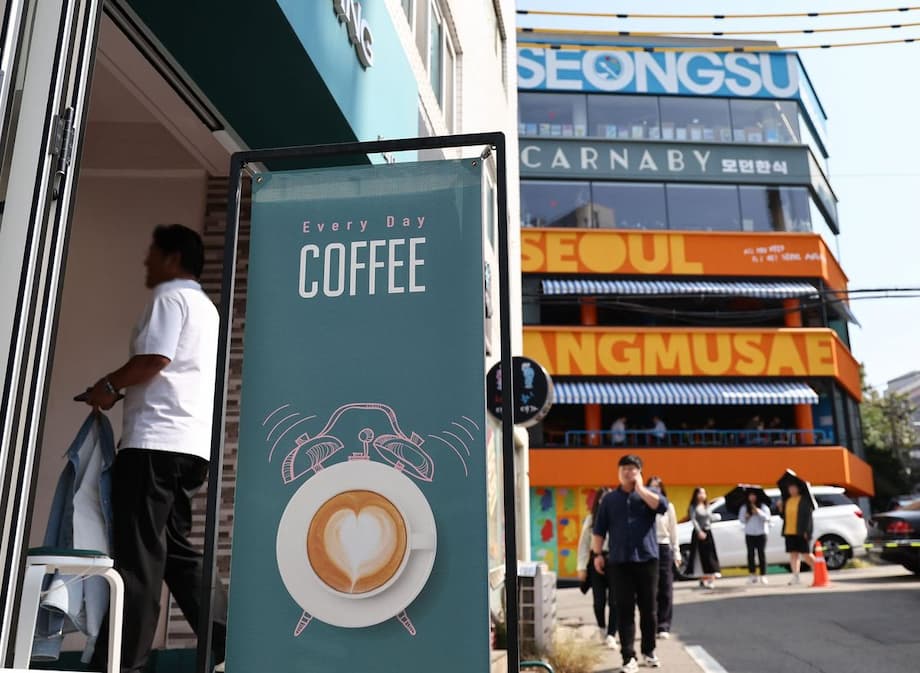A local push to put Hangul back on shopfronts
In Suwon, the Gyeonggi Province city just south of Seoul, officials have launched a municipal subsidy that encourages small businesses to swap foreign language only storefront signs for designs that feature Hangul, the Korean alphabet. Under the program, a shop can receive up to 2 million won (about 1,450 dollars) to cover redesign and installation costs. City hall plans to support about 18 businesses in this first round, and applications remain open until October 10.
Eligibility centers on shops whose current signboards are written entirely in English or another foreign language. Applicants can convert their sign fully into Korean or add Korean lettering alongside the existing text. The goal is not a ban on foreign words. City staff describe it as a nudge for clearer communication and a celebration of local language across busy commercial streets.
A Suwon city official framed the effort as both practical and cultural, and said that smaller family run stores will be prioritized in the selection process. The official explained the intent before stating:
“We want to promote proper advertising practices while also sharing the beauty of Hangul.”
The policy arrives at a time when many retail districts in South Korea lean heavily on English branding. Many residents welcome the cosmopolitan feel. Others say single language signs can confuse seniors and limit access for locals who prefer Korean in daily life. The city presents the subsidy as a voluntary, low cost way to refresh shopfronts while strengthening a shared visual identity grounded in Hangul.
How the subsidy works
The program offers up to 2 million won per shop to offset the expense of swapping or updating a main signboard. The money can go toward design services, production, and installation. The city expects heavy interest, so it will review applications and select about 18 recipients in this first stage.
Qualifying businesses are those whose exterior signage is entirely in a foreign language. Shops can either transition to a Korean only sign or add Korean lettering next to the current wording. City hall says the priority list begins with small family run shops that may struggle with redesign costs. The subsidy is voluntary, and it does not bar the continued use of English or other languages on a sign when Korean is also present.
- Support amount: up to 2 million won per business (about 1,450 dollars)
- Who can apply: shops with signboards written only in foreign languages
- What qualifies: full switch to Korean or a bilingual layout that adds Korean lettering
- Selection size: about 18 businesses in the first round
- Application window: through October 10
- Priority: smaller, locally owned stores
Shops interested in applying can consult the latest notice from Suwon City and prepare basic information about their current sign and the intended change. After selection, the shop hires a sign maker, completes the redesign in line with city rules for size and safety, and submits proof of completion for reimbursement.
Why language on signs matters
Storefront signs are the interface between a business and the street. When a sign uses only a foreign language, some residents cannot easily read it. That can slow wayfinding for older adults and people who are less comfortable with English. Adding Hangul improves clarity for the largest share of local customers without removing any signals that appeal to tourists or younger shoppers.
Urban planners often talk about legibility. Cities feel easier to navigate when words and symbols match the reading habits of the people who live there. Bilingual signs are a simple tool for that. They preserve brand style in a second line of text while giving everyone a clear name to say, remember, and search on a map.
There is also a safety angle. Delivery riders, drivers, and first responders rely on quick identification of storefront names and addresses. A readable Korean line can cut confusion at a glance, especially on narrow streets where people have seconds to scan a block. Retailers gain as well. Clear naming helps on delivery apps and navigation services that often index businesses by their Korean names.
Cultural context and Hangul pride
Hangul is celebrated in Korea for its scientific design and accessibility. King Sejong and his scholars created the script in the fifteenth century so that common people could read and write without mastering classical Chinese. Hangul Day falls on October 9. Many public campaigns near that date aim to highlight the script and invite residents to use it with care.
National law encourages the use of Korean in public institutions, and cities routinely run signboard improvement programs that simplify facades and reduce visual clutter. These efforts tend to focus on safety, readability, and aesthetics. The Suwon subsidy adds a cultural layer by encouraging Korean text to appear where it is missing, alongside the many foreign brand names that have become part of daily commerce.
Suwon is known for heritage sites such as Hwaseong Fortress. The visual language of neighborhoods, from markets to cafe streets, forms part of that identity. Signs that include Hangul make it easier for residents to feel rooted in place while still welcoming international visitors who expect some English on the street.
What shops stand to gain
For a small retailer, a new sign can feel like a cost that keeps getting delayed. The subsidy lowers that hurdle and helps a shop update its look without draining cash flow. A fresh sign also signals that a business is active and invested in the neighborhood, which can draw attention from passersby who have grown used to familiar facades.
Customer access improves when a sign includes Korean. Elderly residents, parents with young children, and people with visual impairments often report that smaller Latin letters are hard to decipher at a distance. Hangul read at a glance in a large, high contrast line can make the difference between a missed door and a new visit. Bilingual designs allow a brand to keep the English style at the top line while offering a clear Korean name as well.
There are design choices that make bilingual signage work. Clear typefaces, sufficient contrast, and balanced placement matter more than ornate styling. Many shops put the Korean name near the entrance and keep the English wordmark above. Others reverse that order and place the Korean name in equal size. The best choices depend on the facade, the street width, and the lighting after dark.
Debate and business freedom
Language is part of brand identity, and some owners prefer to present a name only in English or another language. Critics worry that even a voluntary program can feel like pressure. The Suwon approach leaves the decision to the shop. The city offers money and encouragement, not penalties. Bilingual signs remain welcome and foreign words are not prohibited.
Shops that depend on tourist traffic may want to retain a foreign language headline. The program does not stand in the way. It simply asks that a visible Korean line accompany it so that the local audience is not left guessing. That balance respects business choice while addressing the readability concerns raised by residents.
Signage in Korea is already regulated for safety. Cities set rules on size, placement, and illumination to reduce hazards and visual clutter. Placing a Korean name beside a foreign one fits within that tradition of public guidance. It is a small ask that can improve the cityscape for people who read Korean every day.
How Suwon compares with other language policies
Governments around the world have taken different routes to protect local languages in public life. In Quebec, Canada, commercial signs and advertising must include French, and the French text usually needs to appear with greater presence than other languages. Businesses can include English or other languages, but French must be clearly visible and often dominant in size or placement.
France applies the Toubon Law, which requires the use of French in many official communications, advertising, and some public signage. Brand names and trademarks can appear in other languages, but explanatory text and consumer information must include French. Enforcement has varied by context, yet the intent is steady, to make sure French is not sidelined in daily life.
The Suwon program is different. It relies on incentives rather than mandates. The city is offering limited funds to encourage the addition of Korean to signs that currently have none. That lighter touch reflects a common Korean approach in which local governments try pilot projects and voluntary standards before considering wider rules.
What happens next
Applications are open through October 10. City staff will screen submissions and select about 18 shops for the first round. After designers and installers finish the work, the city will verify completion and issue reimbursements within the program cap. Shop owners can expect publicity once the first set of storefronts switch to Korean or add a strong Korean line.
The city can measure outcomes in simple ways. Inspectors can walk a few busy streets and count how many signs gained readable Korean. Residents can be surveyed on whether new signs helped them find stores more easily. Business owners can report whether foot traffic or inquiries changed after the redesign. If the results look positive and budget remains, officials could consider another round.
Other cities will watch the experiment. Many already run sign improvement programs focused on safety and tidy streetscapes. Adding a language criterion is an easy extension. If the Suwon pilot shows that a small grant brings quick results and little controversy, more localities may test similar incentives around Hangul Day (October 9) or at year end when many shops plan upgrades.
Key Points
- Suwon will pay up to 2 million won per shop to add Korean to foreign language only signs
- About 18 businesses will be selected in the first round, with applications open until October 10
- Eligible shops can switch fully to Korean or adopt a bilingual layout
- Small, locally owned stores receive priority for support
- The program is voluntary and does not restrict the use of English or other languages
- The effort aligns with campaigns that promote Hangul and clearer signage for residents
- Similar language protection in places like Quebec and France relies on mandates, while Suwon is using incentives




